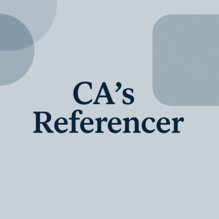Updated return filing via ITR-1 & ITR-2 now live on Income Tax portal for AY22 & AY23:
What taxpayers should know
Jul 30, 2025
Synopsis
The Income Tax Department has enabled utilities for filing updated income tax returns (ITR-U) for AY 2021-22 and 2022-23. Taxpayers now have up to 48 months from the end of the relevant assessment year to rectify errors or omissions by paying additional taxes. Penalties apply based on the filing timeline, with rates varying from 25% to 70%.
The Income Tax Department has now enabled utilities for filing updated income tax returns (ITR-U) in ITR-1 and ITR-2 for the assessment years (AY) 2021-22 and 2022-23 as per Finance Act, 2025.
Union Budget 2025 announced that taxpayers will now have up to 48 months from the end of the relevant assessment year to file an updated return under Section 139 (8A) of the Income Tax Act. This extended time allows individuals to fix errors or omissions in their previous filings by paying more taxes, even if they did not submit a return or filed it incorrectly. However, there are some limits and restrictions on who can file an updated income tax return and when.
What is an Updated Income Tax Return (ITR-U)?
ITR-U provides an opportunity for voluntary compliance to taxpayers in order to rectify errors/ omissions with an objective to reduce litigation.
The deadline for taxpayers to file updated income tax returns has been extended from 24 months to 48 months from the end of the relevant assessment year (A.Y).
CBDT notifies ITR-U: Know who can file updated return, penalty, last date to file
Who can file ITR-U?
Updated returns can be filed by any person within 48 months from the end of the relevant assessment year, whether or not an original, revised or belated return has been furnished under section 139 for such A.Y. It can be filed in following cases:
If the return was previously not filed
If return was filed but
Income was not reported correctly
Wrong heads of income was chosen
To reduce unabsorbed depreciation
To reduce tax credit
Tax of tax not correct
Who cannot file ITR-U?
Updated return cannot be filed if such return:
Is a Nil return or a return of a loss or
Has the effect of decreasing the total tax liability determined on the basis of return furnished for the relevant A.Y or
Results in refund or increases the refund due on the basis of return furnished for the relevant assessment year.
Taxpayer cannot file an updated return in case of search and seizure or case where any prosecution proceedings have been initiated.
Can I file an ITR-U under the new/ old tax regime?
A taxpayer has to choose for the tax regime within the due date prescribed as per section 139 (1) of the Income Tax Act. Once chosen within the due date the taxpayer cannot change the regime cannot be changed.
How many times can I file ITR U in the same AY?
The e- filing portal will not allow you to file ITR u/s139(8A)more than one time.
Last date to file ITR-U
According to income tax rules, the last date to file ITR-U is 48 months from the end of the relevant fiscal year. Hence, for AY 2025-26, the last date to file ITR-U is March 31, 2030.
Penalty applicable on filing ITR-U
A penalty applies to filing an updated return using ITR-U, depending on how quickly the ITR is filed. Madaan says, "This extended window allows taxpayers to rectify past omissions, supporting the government’s objective of improved compliance without prolonged litigation. The additional tax payable on updated returns has also been revised, with rates of 25%, 50%, 60%, and 70% applicable in the first, second, third, and fourth years, respectively."
According to income tax rules, 25% of an additional tax on aggregate tax and interest is levied if the updated ITR is filed within 12 months from the end of the assessment year. This will hike to 50% as an additional tax if the updated return is filed between 12 months and 24 months. If the updated return is filed between 24 months and 36 months, then 60% as an additional tax is payable by the taxpayer. For updated returns filed between 36 months and 48 months, 70% of the additional tax is payable by the taxpayer.
[The Economic Times]


